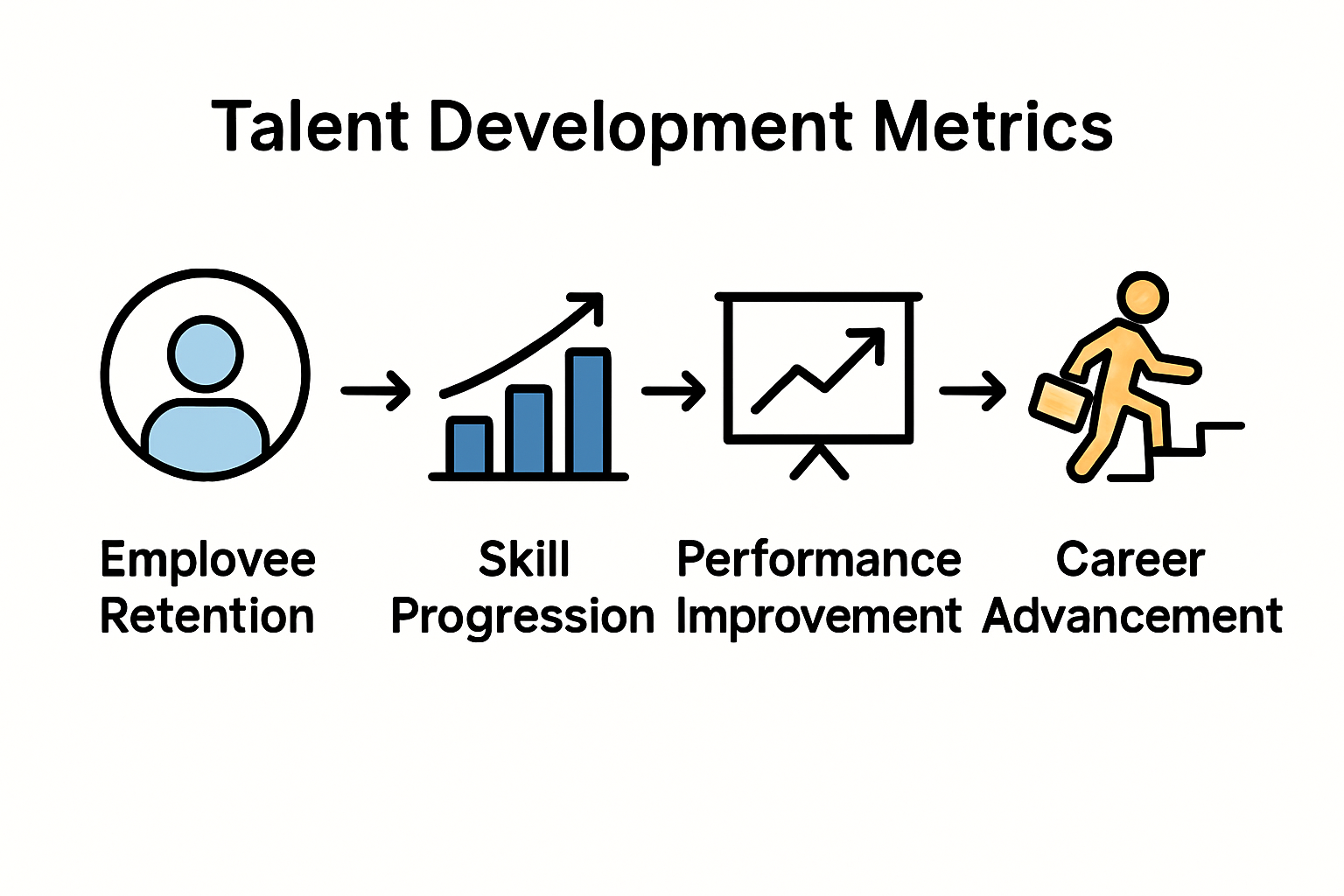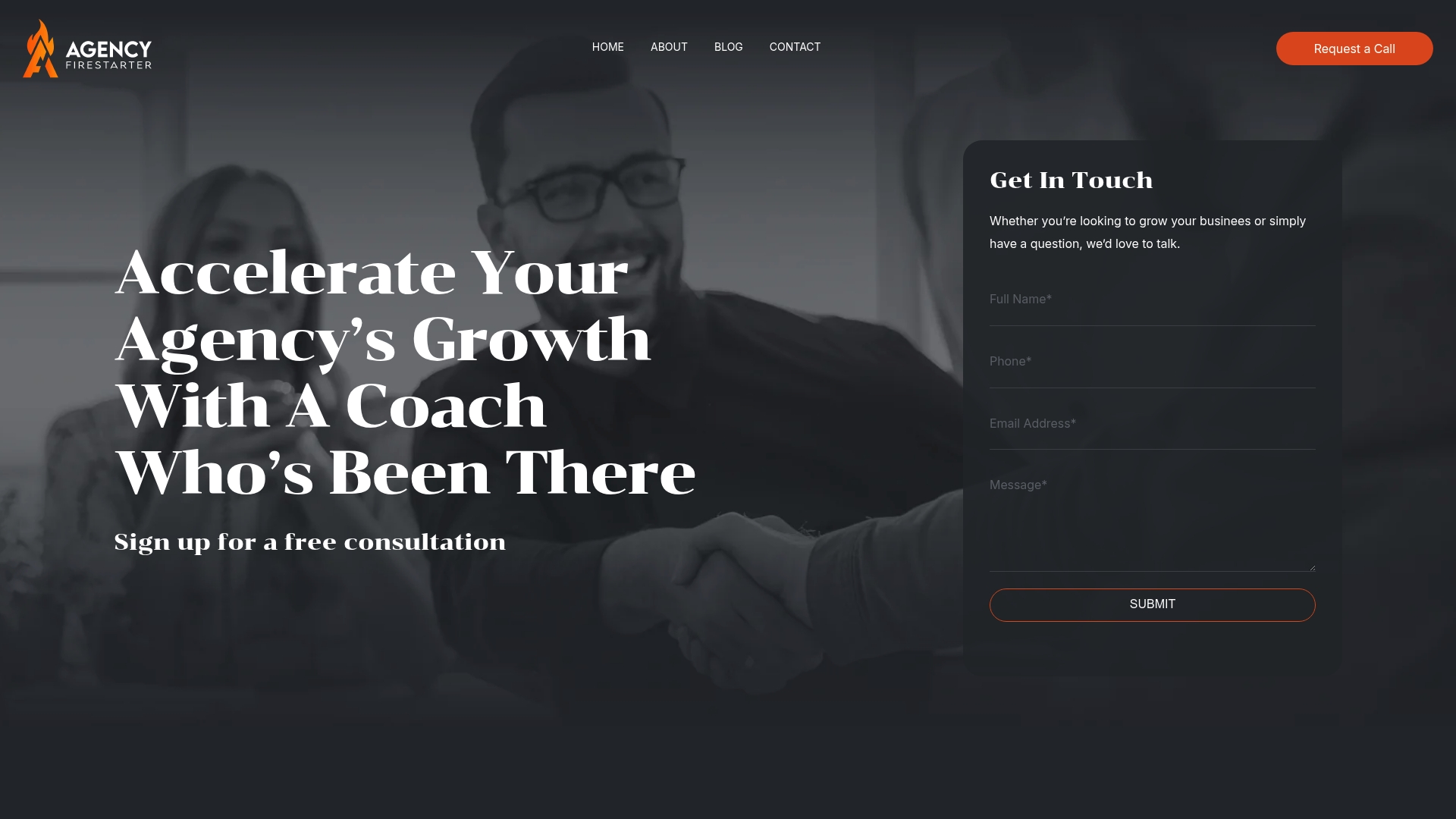
Talent Development Planning for Agencies and Service Firms
Talent development planning is reshaping how agencies and service firms stay ahead. Most leaders focus on hiring or perks, but they overlook how organizations with robust talent strategies are 3.4 times more likely to outperform their competitors in innovation and efficiency. What really sets successful firms apart is not just who they hire, but how they intentionally grow the people they already have.
Table of Contents
- Understanding Talent Development Planning Essentials
- Building A Talent Development Strategy That Works
- Practical Steps For Growing And Retaining Talent
- Measuring Success And Improving Your Plan
Quick Summary
| Takeaway | Explanation |
|---|---|
| Develop personalized learning paths for employees | Tailor development strategies to align individual goals with company objectives, enhancing both personal and organizational growth. |
| Implement regular performance assessments | Conduct comprehensive evaluations focusing on individual strengths and potential to foster continuous employee development. |
| Establish strong mentorship and coaching programs | Facilitate knowledge transfer and professional growth through structured mentorship, creating a supportive learning culture. |
| Measure success with clear performance indicators | Utilize metrics like retention rates and skill progression to assess the effectiveness of development strategies and refine them accordingly. |
| Create a culture of continuous learning | Foster an environment that values education, growth, and professional development to retain top talent and enhance performance. |
Understanding Talent Development Planning Essentials
Talent development planning represents a strategic approach for agencies and service firms to cultivate, retain, and maximize their most critical resource: human talent. At its core, this process goes beyond traditional training to create a comprehensive framework for employee growth, skill enhancement, and organizational alignment.
The Strategic Foundation of Talent Development
Talent development planning is not a one-size-fits-all approach. For agencies and service firms, it requires a nuanced understanding of individual potential and organizational objectives. Strategic talent management involves creating systematic pathways that connect individual employee capabilities with broader business goals.
According to Deloitte’s Human Capital Trends Report, organizations that implement robust talent development strategies are 3.4 times more likely to outperform their competitors in innovation and operational efficiency. This statistic underscores the critical importance of intentional talent development for service-based businesses.
Key Components of Effective Talent Development
Successful talent development planning encompasses several interconnected elements. These include:
- Performance Assessment: Regular, comprehensive evaluations that go beyond traditional metrics to understand an employee’s unique strengths and potential.
- Personalized Learning Paths: Customized development strategies tailored to individual career aspirations and organizational needs.
- Mentorship and Coaching: Structured programs that facilitate knowledge transfer and professional growth.
Agencies must recognize that talent development is not merely about addressing skill gaps but creating an environment of continuous learning and professional evolution. Check out our comprehensive guide on leadership development trends to understand how top firms are reimagining talent strategies.
Here’s a table summarizing the key components of effective talent development planning, giving you a quick visual overview of their purpose and importance within agencies and service firms.
| Component | Description |
|---|---|
| Performance Assessment | Regular, comprehensive evaluations focusing on strengths and potential |
| Personalized Learning Paths | Custom development strategies aligned with individual and organizational goals |
| Mentorship and Coaching | Structured programs to facilitate knowledge transfer and growth |
| Skills Gap Analysis | Systematic identification of current capabilities and future needs |
| Continuous Learning | Ongoing environment that encourages professional development |
The most effective talent development plans are dynamic, adapting to changing business landscapes and individual employee trajectories. They require a holistic approach that balances organizational objectives with individual career aspirations, creating a win-win scenario for both the employee and the agency.
Implementing a robust talent development strategy demands commitment, resources, and a forward-thinking mindset. It’s an investment in human potential that yields exponential returns through increased employee engagement, reduced turnover, and enhanced organizational capabilities.
Building a Talent Development Strategy That Works
Creating an effective talent development strategy requires a systematic and holistic approach that aligns individual potential with organizational objectives. For agencies and service firms, this strategy must be dynamic, adaptive, and responsive to evolving business needs and employee aspirations.
Designing a Comprehensive Talent Development Framework
Successful talent development strategies begin with a clear understanding of organizational goals and individual employee capabilities. Insights from the RAND Corporation suggest that articulating leadership commitment and communicating clear career pathways are critical first steps in building an effective talent development approach.
Agencies must create a structured yet flexible framework that encompasses several key elements:
- Skills Gap Analysis: Systematically identify current capabilities and future skill requirements
- Personalized Development Plans: Create individualized roadmaps that align employee growth with organizational objectives
- Continuous Learning Infrastructure: Establish mechanisms for ongoing skill enhancement and knowledge transfer
Implementation and Measurement Strategies
According to the U.S. Government Accountability Office, effective talent management involves strategically aligning human capital with mission requirements and offering meaningful development opportunities. This approach requires more than traditional training programs it demands a comprehensive ecosystem of learning, mentorship, and professional growth.
Key implementation strategies include:
- Regular performance evaluations that go beyond traditional metrics
- Creating mentorship programs that facilitate knowledge transfer
- Offering diverse learning opportunities such as cross-functional projects, workshops, and external training
Learn more about our agency training program essentials to understand how top firms are revolutionizing their talent development approaches.
Measuring the effectiveness of talent development strategies is crucial. Agencies should establish clear metrics that track not just skill acquisition but also employee engagement, retention rates, and direct contributions to organizational performance. This data-driven approach enables continuous refinement of development strategies.
Ultimately, building a talent development strategy that works requires a commitment to viewing employees as long-term investments. It means creating an organizational culture that values continuous learning, supports professional growth, and provides clear pathways for career advancement. By doing so, agencies can transform talent development from a standard HR function into a strategic competitive advantage.
Practical Steps for Growing and Retaining Talent
Growing and retaining top talent requires a strategic and intentional approach that goes beyond traditional human resources practices. Agencies and service firms must develop comprehensive strategies that address both professional development and employee satisfaction to create an environment where talented professionals want to build their careers.
Developing Individual Growth Pathways
Harvard Business School Online emphasizes the critical importance of establishing structured talent development approaches that align personal career aspirations with organizational objectives. This means creating individualized development plans that are dynamic and responsive to both employee potential and business needs.
Key elements of effective individual growth pathways include:
- Career Mapping: Creating clear, transparent progression routes within the organization
- Skill Assessment: Regular evaluations that identify potential and areas for development
- Personalized Learning Opportunities: Tailored training programs that match individual career goals
Implementing Comprehensive Talent Review Processes
According to OpenStax’s Organizational Behavior research, successful talent retention involves structured talent review processes. This includes calibration meetings to assess employee performance and potential, and developing targeted development strategies.
Practical implementation strategies involve:
- Conducting regular performance reviews
- Creating stretch assignments that challenge and engage employees
- Developing mentorship and coaching programs
Explore our in-depth guide on agency training programs to understand how top firms create compelling growth environments.
The U.S. Office of Personnel Management highlights the importance of Individual Development Plans (IDPs) as a critical tool for aligning employee training with organizational goals. These plans should be collaborative, forward-looking documents that serve as living roadmaps for professional growth.
Retaining top talent goes beyond formal training programs. It requires creating an organizational culture that values continuous learning, provides meaningful work, and offers genuine opportunities for professional advancement. This means investing in employee experiences that make talented professionals feel valued, challenged, and connected to the broader mission of the organization.
Agencies must also recognize that talent retention is a multifaceted strategy. It involves competitive compensation, meaningful work, professional development opportunities, and a positive workplace culture that supports individual growth and organizational success. By treating talent development as a strategic priority rather than an administrative function, firms can create environments where top performers choose to build their careers.

Measuring Success and Improving Your Plan
Measuring the effectiveness of talent development strategies is crucial for agencies and service firms to ensure continuous improvement and alignment with organizational objectives. A data-driven approach allows firms to refine their talent development plans, identify potential gaps, and create more targeted professional growth opportunities.
Key Performance Indicators for Talent Development
According to the U.S. Government Accountability Office, successful talent development measurement begins with linking training programs directly to organizational performance. This requires a strategic approach to workforce planning that assesses current and future skill needs, identifies potential gaps, and develops comprehensive strategies for talent acquisition and development.
Critical metrics for evaluating talent development effectiveness include:
The following table presents key metrics for measuring the effectiveness of talent development strategies, allowing agencies and service firms to track their progress and areas for improvement.
| Key Metric | What It Measures |
|---|---|
| Employee Retention Rates | Longevity of top performers |
| Skill Progression | Individual and team skill development over time |
| Performance Improvement | Changes in productivity at individual and team levels |
| Career Advancement | Internal promotions and career path growth |
| Employee Engagement Levels | Degree of employee involvement and satisfaction |
| Leadership Development | Effectiveness of leadership growth programs |

- Employee Retention Rates: Tracking how long top performers remain with the organization
- Skill Progression: Measuring individual and team skill development over time
- Performance Improvement: Analyzing changes in individual and team productivity
- Career Advancement: Monitoring internal promotions and career path developments
Continuous Improvement Strategies
The New York State Office of Addiction Services and Supports highlights several key indicators for successful talent management beyond traditional performance metrics. These include:
- Employee engagement levels
- Leadership development effectiveness
- Organizational culture health
- Professional ethics and cultural competency
Discover our comprehensive guide to agency performance metrics to gain deeper insights into measuring organizational success.
Implementing a robust feedback mechanism is essential for continuous improvement. This involves creating multiple channels for gathering insights from employees, including:
- Regular performance reviews
- Anonymous surveys
- Exit interviews
- Peer and self-assessment tools
Agencies must adopt a dynamic approach to talent development measurement. This means treating performance metrics as living documents that evolve with the organization’s changing needs. The goal is not just to collect data but to translate those insights into actionable strategies that drive individual and organizational growth.
Effective measurement goes beyond quantitative metrics. It requires a holistic approach that considers both tangible outcomes and intangible factors such as employee satisfaction, team dynamics, and cultural alignment. By creating a comprehensive evaluation framework, agencies can transform talent development from a static process into a dynamic, responsive system that continuously adapts to changing business landscapes.
Ultimately, the most successful talent development plans are those that view measurement not as a final destination but as an ongoing journey of improvement. This approach ensures that agencies remain agile, competitive, and capable of nurturing their most valuable asset: their talented professionals.
Frequently Asked Questions
What is talent development planning?
Talent development planning is a strategic approach used by agencies and service firms to cultivate and maximize their employees’ skills and strengths. It involves creating personalized paths for professional growth and aligning individual capabilities with organizational goals.
Why is talent development important for agencies and service firms?
Agencies and service firms with effective talent development strategies are 3.4 times more likely to outperform their competitors in terms of innovation and efficiency. Investing in talent growth not only enhances employee engagement but also reduces turnover rates.
What are the key components of effective talent development?
Key components include performance assessment, personalized learning paths, mentorship and coaching programs, and continuous learning opportunities. These elements work together to create a supportive environment that fosters employee growth.
How can agencies measure the success of their talent development strategies?
Agencies can measure success through key performance indicators such as employee retention rates, skill progression, career advancement, and employee engagement levels. These metrics help assess the effectiveness of development efforts and guide future improvements.
Transform Employee Growth into Your Agency’s Competitive Advantage
Are you frustrated by high turnover, untapped potential, or training initiatives that miss the mark? As this article outlines, talent development planning is not just a buzzword—it is a proven strategy that can put small and mid-sized agencies ahead of their competition. If you are missing personalized learning paths, regular performance assessments, or your mentorship programs lack structure, the gap between current talent and your ambitious goals will persist. Agency Firestarter helps agency owners like you close that gap by offering expert advice and hands-on guidance in areas such as leadership development, operational improvement, and tailored training frameworks. Let your team and business grow together, backed by insight and step-by-step support.

Take the first step toward a stronger agency by exploring our business growth and coaching solutions. Discover client success stories, actionable training approaches, and proven leadership strategies at Agency Firestarter. If you are ready to transform your approach to talent development, visit our contact page to set up a free consultation right now. Accelerate your team’s evolution and give your agency lasting momentum for the months ahead.
Recommended
- Agency Training Programs: Essentials for Growth and Success – Business Coach For Digital Marketing Companies, SEO, Social Media Agencies
- Coaching Versus Mentoring: Key Differences for Agencies – Business Coach For Digital Marketing Companies, SEO, Social Media Agencies
- Agency Business Development: Proven Strategies for Growth – Business Coach For Digital Marketing Companies, SEO, Social Media Agencies
- The Future of Leadership Development: Trends to Watch in 2025 – Business Coach For Digital Marketing Companies, SEO, Social Media Agencies
